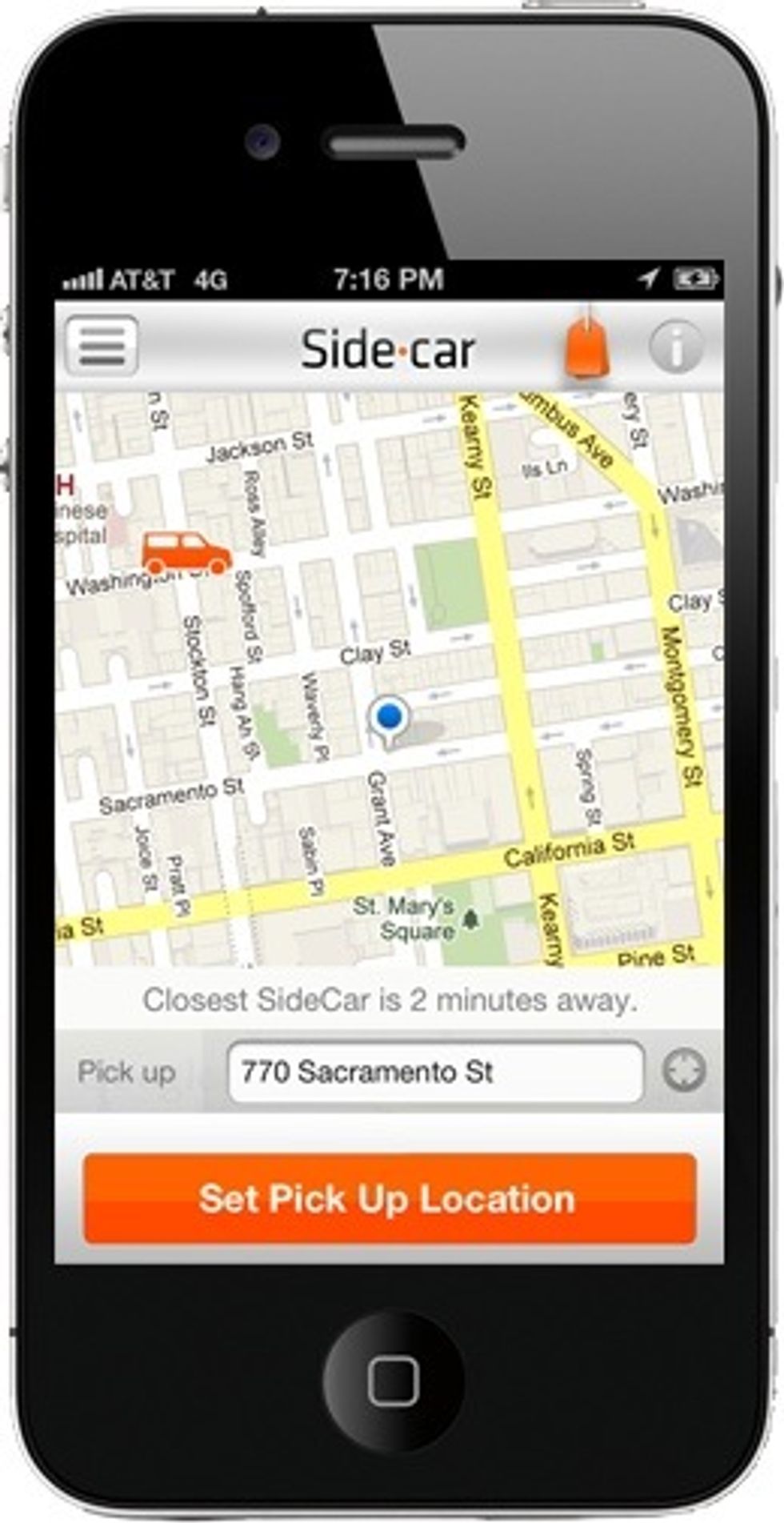Calling itself “the first on-demand rideshare community,”Sidecar emerged from four months of beta testing last week, having already facilitated 10,000 rides in and around San Francisco.
It's a free smartphone app (available in both iOS and Android) that connects you with nearby drivers when you need a ride. You can choose to make a donation to the driver for that ride if you wish; it’s voluntary.
“During testing, people told us that they love the convenience and the friendliness of Sidecar,” says CEO Sunil Paul. “The reception has been astounding.”
The service joins many other players in the transportation space, including companies we’ve profiled here like Uber and Getaround.
But Paul says Sidecar is different in that it is “the first ever crowd-sourced transportation network.”
He believes it is attracting people for three reasons:
“One is our unique method for payment, making it voluntary, and discretionary to the passenger as to how much they want to pay. In the app, we show them the community average for a similar ride at similar time of similar length.
“Two is the community feeling it creates. This is a true p2p community, so it’s more like getting a ride from a friend than taking a limo or a cab. We are a social network on wheels, very different from other modes of transportation.
“Three, it’s an eco-friendly way to move around the city. It can help lead to a car-free life. What we aspire to is to turn your smartphone into your car.”
Sidecar has a pretty cool feature that lets you track the car on a map as it approaches to pick you up, which allows for a very accurate ETA.
As with other p2p marketplaces, riders and drivers use their verified identities (no anonymity here) can rate each other. That’s one of multiple layers the company uses to ensure a safe community. All drivers have to pass a background check and an interview.
“If a driver ever gets a low rating, we will investigate and take the appropriate action,” says Paul.
The Sidecar team didn’t know how the voluntary payment system would work out in beta but it turns out that the overwhelming majority just pay the default amount, which is the community average as displayed on the app.
“Most rides are relatively short -- under seven miles,” says Paul. “The drivers make a little extra pocket money to offset the 20 percent of their household budget that is the average cost of owning a car in the U.S. Drivers love this experience, they earn a little money and there is the tremendous social aspect.”
Paul, a veteran entrepreneur and partner in Spring Ventures (one of the company's funders) sees Sidecar as part of the third wave of mobile apps.
“The first wave involved web to mobile apps. The second wave involved dedicated mobile apps but still primarily had you interacting with your phone. The third wave as affecting everyday life; these are the apps that help you make your way in the world.
“These will have a lot more powerful impact on our society.”
There’s a good case to be made that Millennials, in particular, are building much of their life around their phones in way that previous generations did around their cars.
“Phones are tools to live your life in a new way,” says Paul. “It used to be your car was the key to freedom and to income. Today your phone is the key to both. That’s the way you connect with other people and also a tool to generate income and get around.”
Note: Sidecar should not be confused with Sidecar, which I also profiled here recently.





















